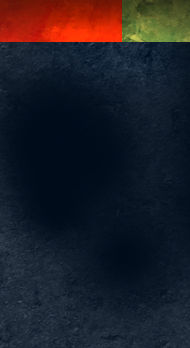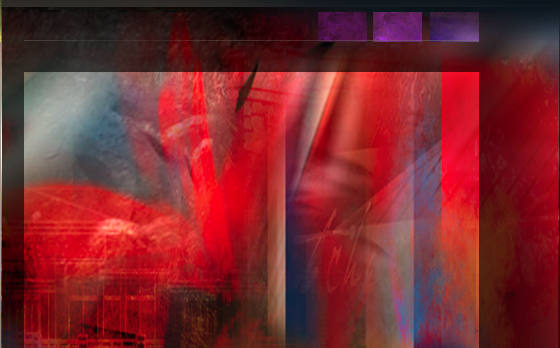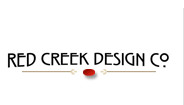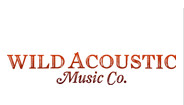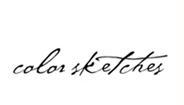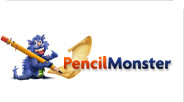Graphic Repetition to Create Depth
Not too long ago I was engaged to create a concept design for a very large ocean side resort. To complete the artwork, I soon realized the large pool and amenity area, which was not part of the project, would be visible in the foreground. “Come up with something” was the client’s response, so with little to go on, I quickly created this concept.



Graphically, one of the techniques I used to help show the changes in elevation, the turns in the landscape, and the distance from camera, was to use a repeated object. In this case, the repeated object is the lounge chair. As the viewer’s eye moves around the artwork, the different sizes and positions of the chair help delineate the landscape.
Multiple Layer Masks in Photoshop
Occasionally when creating a complex illustration, it is helpful to have options when hiding portions of a layer. To consistently use nondestructive editing, a single layer mask can be a little restrictive. For example, what if you have used a layer mask to create the outline of a shrub in the landscape, and a portion of it lies behind a column?

The answer is to use a second layer mask even though Photoshop only allows one per layer. Place the shrub layer inside of a group. A layer mask can then be applied to the group, allowing the option of a second mask. A section of the shrub can be removed without destroying the mask defining the shrub itself. Groups can be nested within groups, creating the option of several masks per layer.
Symmetry, Simplicity, Art, Design
Alone, iconic, and symmetrical, the design calls for a landscape feature at the center of a round about. As it will be seen from all sides, it must be the same on all sides. Themed and representative, the style must accentuate the identity while not being obtrusive. It must be highly visible while not blocking any views. The design answer is symmetrical and simple.

Like the design, the illustration portrays the same simplicity. Only a hint of background and a grass line foreground, suggest the environment but do not detract from the focus. The spray and fall of water provide compositional balance between the landscape’s features. The color palette is simple and light so as not to be a part of the design presentation.
When the design question calls for a simple answer, keep it simple. When the design is simple, quiet elegant artwork will keep the focus where it belongs: on the design. Symmetry between design and the representational artwork is a very, very effective strategy.
Dramatic Environment in Illustration
When creating architectural illustration, a more dramatic environment will add some excitement to the work. Rain or snow can be used for extreme effect, but simply making the time of day early evening can be quite dramatic. Dusk can be especially effective; a brighter sky and long shadows will add a lot of contrast to the rendering.

This illustration, the base of a high rise hotel in Scotland, has a unique but simple elevation. Using early evening as the time of day, details are still visible, lamps are turned on, light is projecting up the stone exterior, and shadows bring out the movement in the elevation.
Art: Learn, Repeat, Internalize
When creating art with digital media, there are a lot of different skills to learn. It is important to learn all of the skills and concepts necessary for working with traditional media, such as composition, color, and so forth. Digital media also requires a working knowledge of painting software, computer systems, and print methods. Some of my discussions here involve traditional concepts, while others are purely digital.

It is important to keep in mind that the ColorSketches Tips are learning devices. Yes, they can be added to your growing list of art tools, but more importantly keep in mind that the challenge they solve can often be accomplished in multiple ways. Rather than just copying the routine, think about why it works, and see if you can expand upon the concepts in your own artwork. Always Learn, Repeat, and Internalize. Obtain and Learn new knowledge, Repeat it until it can be done without thinking. Then Internalize the concept – make it you own, apply your own twist to it, and use it to expand and create new concepts based on the fundamentals.
Keeping the Perfect Digital Colors
When working on a commercial art project, it is not unusual to receive change requests from the client. It is also not unusual to receive a new project based on an old one, months or even years later. The challenge that often arises; how to paint new areas with the exact same color mix from before. Photoshop and Painter will let you save color swatches in palettes. This may not work very well for two reasons. First, the swatch file is a separate file that must be saved and stored with each piece of art. Secondly, brushes will often mix two colors, and you may not remember which two colors from the swatches were used for each mix. A little trick, is to save the colors samples on their own layer within the artwork itself.

Saving each color used in the artwork provides an easy reference, even years after the piece was created. Group or name the color layers with a standard system that enables easy reference to color mixes and their location in the artwork. Changing areas within the art are easy with the perfect color match. The color groupings can also be handy for creating a new piece of artwork with a similar or matching color scheme.
Painting Falling Water
Digitally painting falling water can be a little tricky, but it is not that difficult with a little technique. Creating the water in several steps can provide great results. Using some whites, grays, and light blues, create a few rough, parallel lines. Blur and smudge until it becomes a translucent cover over the structure behind. In the same location, create a few more rough parallel lines. Blur and smudge again, in a vertical direction, creating a blurry vertical pattern.

Once again, some white, rough vertical lines, but this last pass is to add some detail. A few whites specks will give the feeling of water spray. The last step is to create a layer mask, and with a low opacity, feathered eraser, remove and thin portions of the fall. Varying the opacity of the waterfall, revealing different amounts of background through the water will create a more realistic look and give the waterfall some depth.
The Color of Landscaping
In an architectural rendering, using bold colors that complement the colors of the building can make a dramatic impact on the presentation.

In this example, the seasonal blooms on the Royal Poinciana turn a very basic illustration into a very striking and vibrant one.

Illustrating an Isolated Subject
When designing and illustrating an isolated subject, it is not necessary, and possibly distracting to render the surrounding area. Simply suggesting a background and foreground can really make the subject stand out.

Abstractly edging the illustration, creating a vignette, can further simplify the graphic. The sketched white overlay on the background and side landscaping saved a lot of rendering time as well as creating a unique border around the subject.
Architectural Lighting in Illustration
It is not just the glow from lighting that can add character to an architectural illustration. The light fixtures themselves can be used to provide balance to the composition.

The design of the light fixtures can also contribute to the style and ambiance of the architecture.
Painting Attention Grabbing Detail
Creating the desired motion in a painting is not always the easiest thing to do, especially when the work has to illustrate certain features in a design. One method is to paint colorful, attention grabbing details; red is always a good candidate for the eye catching color.

The use of bright red umbrellas positioned in this courtyard immediately grab the viewer’s eye, and move them through the space. Because the red is a complementary of the green landscaping, they also provide a lot of contrast within their surroundings.

As you can see in the full view of this design of a resort spa, the bold accents provide tension and movement, in an otherwise earth tone color palette.
The Art of Technical Illustration
When working in conceptual art, a project sometimes requires the design to be represented as a nice piece of artwork. Sometimes, however, the message needs to be communicated in a more detailed, technical illustration. A technical illustration can still be a lot of fun, and it can also be an attractive graphic.

This particular illustration represents the design of a littoral shelf, which is the intersection of a man made body of water and the land. The area is landscaped with a variety of plant species, each serving a particular purpose in the sustainability of the shoreline.



